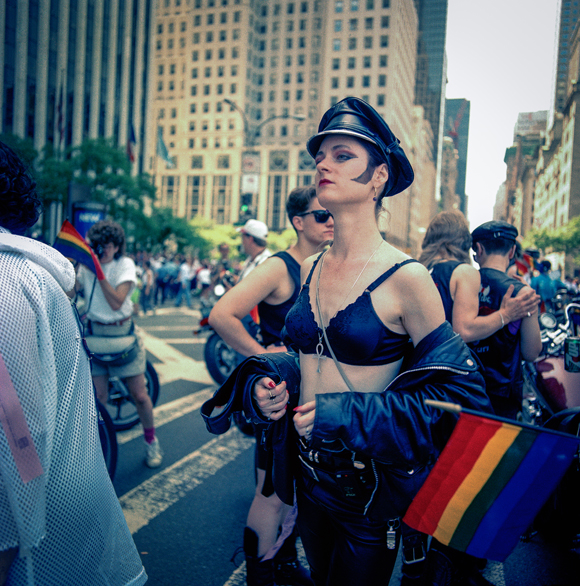Pride (TM)
BY Eric Gonzaba ON June 15, 2015
 I couldn’t let June pass without some kind of comment about perhaps the most recognizable LGBT event on the annual calendar, but Pride is a tricky subject to handle. On the one hand, it’s all too easy to make cliché observations about how emancipating it is that our communities can come together nearly a half century after Stonewall and celebrate the enormous progress queer people have made in their search for acceptance and liberation.
I couldn’t let June pass without some kind of comment about perhaps the most recognizable LGBT event on the annual calendar, but Pride is a tricky subject to handle. On the one hand, it’s all too easy to make cliché observations about how emancipating it is that our communities can come together nearly a half century after Stonewall and celebrate the enormous progress queer people have made in their search for acceptance and liberation.
On the other hand, Pride has definitely strayed from its roots. Not that corporate backing is necessarily a bad thing, but the gargantuan presence of corporate sponsorships at many of these parades (Chiptole’s float, for instance, showed pictures of rainbow burritos with clever taglines like “¿Homo Estás?”) sometimes makes the parades feel like pep rallies for our roles as mere consumers rather than fierce, proud members of a subculture. Sure, that subculture status is probably fading as we find more and more allies, but as our Twitter feeds and Facebook walls showed after the Caitlyn Jenner story broke, we still have a long way to go teaching ourselves and others about the complexities of our communities.
For those privileged enough to attend one of the many parades and festivals this month, the concept of Pride serves a reminder that, despite our oft-immense feelings of isolation, we aren’t alone in our experiences. Even though we were born into a world not quite made for us, we queer people have carved out a place in it for ourselves. That place isn’t a utopia; the issues of gay men still dominate the movement’s attention at the expense of our greatly diverse queer communities. Furthermore, Pride should also be about more than our gay dance parties, no matter how great the playlists we create for them. The feel-good notion of Pride is tampered by the growing violence against trans bodies and our communities’ collective neglect of LGBT homeless and seniors. (See DarkMatter’s #NotProud conversation on twitter).
As our concept of Pride changes, so should our priorities. We can welcome Chipotle, but Pride also comes with a responsibility to better our communities, to educate, and to help others. The rainbows on vodka bottles and burrito wrappers are signs of our greater acceptance, but they are the result of the tireless work of homophile activists and liberationists, people who braved jail and shed blood so that we might be able to fight about what the heck pride is all about generations later. We owe it to them and to ourselves to make Pride both a party and a time to reexamine our queer sensibilities.
Happy Pride.








